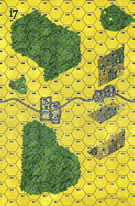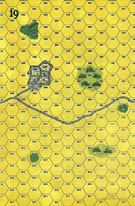Errors? Omissions? Report them!
|
Common Cause Iron Wolves #4 |
||
|---|---|---|
|
(Attacker)
Germany
(Attacker) Lithuania |
vs | Poland (Attacker) |
| Formations Involved | ||
|---|---|---|
| Germany |  |
1st Cavalry Division |
| Lithuania |  |
Cavalry Division |
| Poland |  |
Suwalki Cavalry Brigade |

|
| Overall Rating, 2 votes |
|---|
|
3.5
|
| Scenario Rank: --- of 969 |
| Parent Game | Iron Wolves |
|---|---|
| Historicity | Alt-History |
| Date | 1939-09-01 |
| Start Time | 08:00 |
| Turn Count | 18 |
| Visibility | Day |
| Counters | 95 |
| Net Morale | 0 |
| Net Initiative | 1 |
| Maps | 4: 15, 17, 18, 19 |
| Layout Dimensions | 86 x 56 cm 34 x 22 in |
| Play Bounty | 169 |
| AAR Bounty | 167 |
| Total Plays | 2 |
| Total AARs | 1 |
| Duplicates | LIWo010 |
| Battle Types |
|---|
| Meeting Engagement |
| Conditions |
|---|
| Off-board Artillery |
| Joint Forces Battle |
| Scenario Requirements & Playability | |
|---|---|
| Eastern Front | Counters |
| Iron Wolves | Base Game |
| Road to Berlin | Maps |
| White Eagles | Counters |
| Introduction |
|---|
|
Fearing security leaks, the Germans did not approach the Lithuanians until after their attack on Poland was under way. Therefore, as with their Slovak allies on Poland's southern border there was no joint planning before the attack. But Lithuania did have a mobile formation that would have been useful if joined with the German Army's similar brigade. |
| Conclusion |
|---|
|
Lithuania decided against aligning itself with Germany, leading to occupation by the Soviet Union and loss of the nation's independence. But personal freedom had already been lost, and after 1926 the only question was the language of oppression. The German cavalry brigade was simply not as good as its Lithuanian or Polish counterparts. |
Display Relevant AFV Rules
Display Order of Battle
Display Errata (3)
Errors? Omissions? Report them!

 IrWo003
IrWo003 































